Pallet Inverter: How to Scale Unmanned Pallet Swapping in Warehouses?
Your warehouse operates on a tight schedule. Every process needs to be efficient. But manual pallet swapping is a persistent bottleneck. It is slow, requires significant manpower, and often leads to product damage or even worker injuries. You see the costs add up daily. There are direct labor costs, potential worker compensation claims, and the hidden costs of shipping delays and reduced throughput. These issues are not just operational headaches. They are strategic threats to your profitability and your ability to compete. For a leader like Javier Morales, who scrutinizes every investment for its return and stability, these inefficiencies are unacceptable. The solution is an unmanned pallet swapping system. By using an automated pallet inverter, you can make a strategic investment that directly addresses these challenges and paves the way for future growth.
Scaling unmanned pallet swapping in a warehouse is achieved by integrating automated pallet inverters directly into the production or logistics line. These machines automatically clamp, rotate, and exchange pallets without human intervention. The key to scale is connecting them seamlessly with other automated systems like conveyors, Automated Guided Vehicles (AGVs), and a central Warehouse Management System (WMS). This integration creates a fully autonomous, high-throughput workflow that can operate 24/7, turning a manual bottleneck into a streamlined, data-rich process.
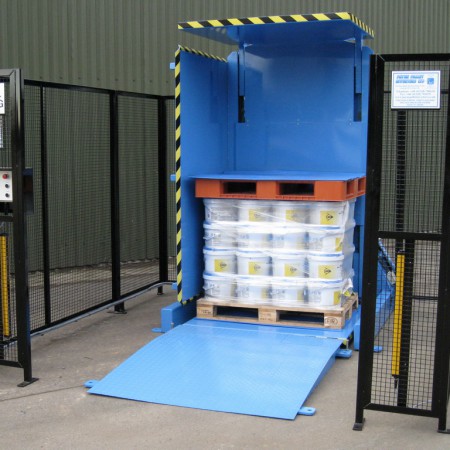
This technology might sound complex, but the principles are straightforward. It's about replacing a manual, variable process with a mechanical, consistent one. I have seen firsthand how this shift can transform an entire operation. Let's break down exactly how this works. We will look at the real-world impact on efficiency, the critical safety systems required for unmanned operation, how it integrates with your digital backbone, and most importantly, the financial return you can expect.
How does a pallet inverter boost warehouse efficiency and throughput?
You are constantly looking for ways to improve your facility's output. Your goal is to get your capacity utilization as high as possible, perhaps to 95% like some of my most ambitious clients. But manual processes are often the biggest barrier. Think about it. Every minute a forklift driver spends carefully maneuvering a load to swap a pallet is a minute they are not feeding a production line or loading a truck. This slow, manual step creates backlogs and can leave your expensive machinery idle. The solution is to automate this task entirely. A pallet inverter transforms a slow, multi-minute manual job into a predictable, automated cycle that often takes less than 60 seconds. It works tirelessly, 24/7, without breaks or shift changes.
A pallet inverter boosts warehouse efficiency by completely automating the slow and labor-intensive process of transferring goods from one pallet to another. This automation drastically reduces cycle times, eliminates the need for manual labor for this specific task, and allows for continuous, non-stop operation. The result is a significant increase in overall throughput and better utilization of your skilled workers and other expensive warehouse equipment.
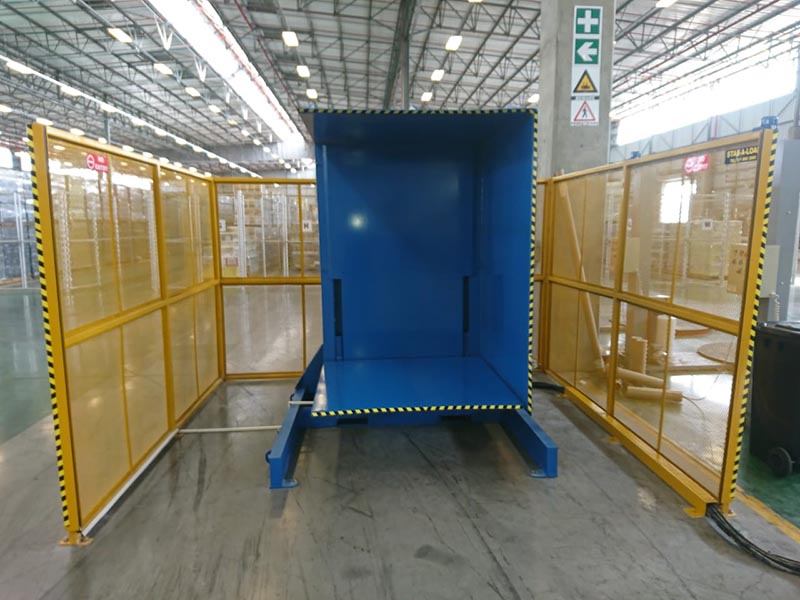
To understand the full impact, we need to look deeper than just one cycle. It is about how this one change affects the entire system. I have helped many clients analyze this, and the results are always compelling. It's a story of unlocking hidden potential in your existing operations.
The Mathematics of Throughput
The core benefit is speed and consistency. A manual pallet swap can take anywhere from 3 to 10 minutes, depending on the skill of the operator, the type of product, and the congestion in the area. An automated pallet inverter performs the same task in a fixed, predictable time, typically 45 to 90 seconds.
Let’s compare the two processes directly:
| Feature | Manual Pallet Swapping | Automated Pallet Inverter | Impact on Efficiency |
|---|---|---|---|
| Average Cycle Time | 5 minutes | 1.5 minutes | 70% Reduction in time per pallet |
| Consistency | Highly variable | Highly consistent | Enables predictable planning and scheduling |
| Labor Requirement | 1-2 workers + forklift | 0 (unmanned) | Frees up skilled labor for value-added tasks |
| Operating Hours | Limited by shifts | 24/7 | Maximizes throughput without increasing labor cost |
This raw data shows a clear advantage. I remember a client, a steel coil producer much like Javier's company. They had three people per shift dedicated just to re-palletizing finished goods for different customer requirements. The process was slow and a constant source of production delays. After we installed a fully automated in-line pallet inverter, they were able to reassign those workers. Two went to quality control inspection and one was trained for a machine maintenance role. This move not only sped up their packaging line but also directly contributed to their goals of better quality and higher machine uptime.
Unlocking System-Wide Gains
The efficiency boost is not isolated to the pallet swapping station. It has a ripple effect across your entire warehouse. When you remove a bottleneck, the whole system flows better. Production lines no longer have to wait for materials to be swapped onto in-house pallets. Outbound shipping docks are not delayed waiting for loads to be transferred to shipping pallets. This reliability allows you to run a leaner operation. It supports Just-In-Time (JIT) principles and helps you meet the demanding schedules of the automotive or construction industries. For a CEO like Javier, who aims for 95% equipment uptime, eliminating these small, cumulative delays is not just a minor improvement; it's a fundamental step toward achieving that strategic goal.
What are the critical safety features for an unmanned pallet inverter system?
In any industrial setting, but especially in a heavy industry like steel manufacturing, worker safety is the highest priority. Manual pallet handling is an inherently high-risk activity. It often involves your team performing heavy lifting, adopting awkward postures, and working in close proximity to moving forklifts. This creates a perfect storm for back injuries, crushed feet, and other serious accidents. A single incident can have devastating consequences. It impacts employee morale, leads to extremely high worker compensation costs, and can trigger regulatory inspections and fines. You cannot run a modern, efficient factory if your core processes are fundamentally unsafe for your people. Unmanned pallet inverters are the answer because they are designed with safety as their primary function. They physically remove the human from the most dangerous part of the process.
The critical safety features for any unmanned pallet inverter system work together to create a completely secure operating zone. These features include robust physical safety fencing with electronically interlocked gates that shut the machine down if opened. They also use presence-sensing devices like light curtains or area scanners that immediately stop all motion if a person or object enters the protected area. Redundant emergency stop buttons, intelligent sensors that confirm correct load positioning before operation, and automated fault diagnostics complete the system, ensuring it fails safely and prevents accidents without any need for human supervision.
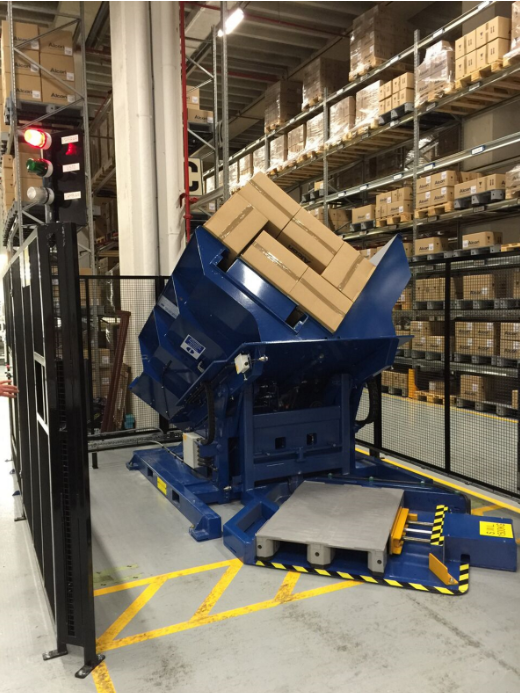
As an engineer who has designed and built these systems for years, I know that safety is not just one feature, but a complete philosophy. It must be built into the machine from the ground up. Let's break down the essential layers of protection that a truly safe, unmanned system must have.
Layer 1: Physical Guarding and Access Control
This is the most visible layer of safety. The entire machine's operating area must be enclosed by high-strength safety fencing. This isn't just any fence; it's designed to withstand impacts and prevent anyone from reaching into the machine's moving parts. Access into this guarded area is only possible through specific gates. These gates are equipped with safety interlock switches. If a gate is opened while the machine is running, the interlock immediately sends a stop signal to the machine's controller, cutting power to the motors and hydraulics in a safe and controlled manner. The machine cannot be restarted until the gate is closed and a deliberate reset action is performed from outside the cage.
Layer 2: Presence-Sensing Technology
Physical barriers are great, but you need an active system to protect against accidental entry. This is where light curtains and laser scanners come in.
- Light Curtains: These are installed across the entry and exit points of the conveyor line. They create an invisible curtain of infrared light. If any object, like a person's hand or body, breaks this curtain, the machine immediately goes into a safe state.
- Area Scanners: For more complex layouts, laser scanners can monitor a wide horizontal area around the machine. They can be programmed with "warning" and "stop" zones. If someone enters the outer warning zone, a light or horn might activate. If they proceed into the inner stop zone, the machine halts immediately.
Layer 3: Redundant and Failsafe Controls
| The "brain" of the machine's safety system is just as important as the physical hardware. As an engineer, I always insist on using a dedicated safety PLC or safety relays. | Safety Control Component | Purpose | How it Works |
|---|---|---|---|
| Safety PLC/Relay | Manages all safety inputs (E-stops, gates, light curtains) | Uses redundant internal circuits. It continuously cross-checks signals to ensure they are working. If any fault is detected, it defaults to a safe, stopped state. | |
| Dual-Channel Circuits | Prevents failure from a single component fault | Every safety device uses two separate electrical channels. The system will not operate unless both channels are functioning correctly. A single broken wire won't create an unsafe condition. | |
| Emergency Stops (E-Stops) | Provides an immediate manual override | These are the big red buttons placed at all operator stations and access points. Pressing one physically breaks the power circuit to the machine's motors and actuators. |
This multi-layered approach is not optional. It is the standard for modern industrial automation and is essential for compliance with global safety standards like ISO 13849. For a business leader like Javier, investing in this level of safety is not just about protecting employees; it is about protecting the entire business from risk and liability.
How can pallet inverters integrate with existing WMS and automation systems?
You have likely already invested significant capital in your digital infrastructure. Your Warehouse Management System (WMS) is the brain of your operation, and you may have already deployed automation like conveyors or AGVs. The last thing you need is a new piece of equipment that operates in isolation. A machine that cannot communicate with your existing systems is not a solution; it is an "island of automation" that creates new problems. It forces manual data entry, disrupts the smooth flow of materials, and prevents you from achieving the end-to-end production visibility that is so critical for modern digital transformation. A standalone machine is a step backward.
Modern pallet inverters are designed for seamless integration. They are not simple machines; they are intelligent, communicative devices that become a natural node in your larger automated ecosystem. A pallet inverter integrates with an existing WMS and other automation systems through its on-board Programmable Logic Controller (PLC). This PLC acts as the machine's brain and speaks the same language as your other systems using standard industrial communication protocols like Ethernet/IP or PROFINET. This allows your WMS to send high-level commands like "swap pallet on this load" and receive back critical data like "cycle complete" or "fault detected," ensuring the inverter's actions are perfectly synchronized with conveyors, wrappers, and AGVs.
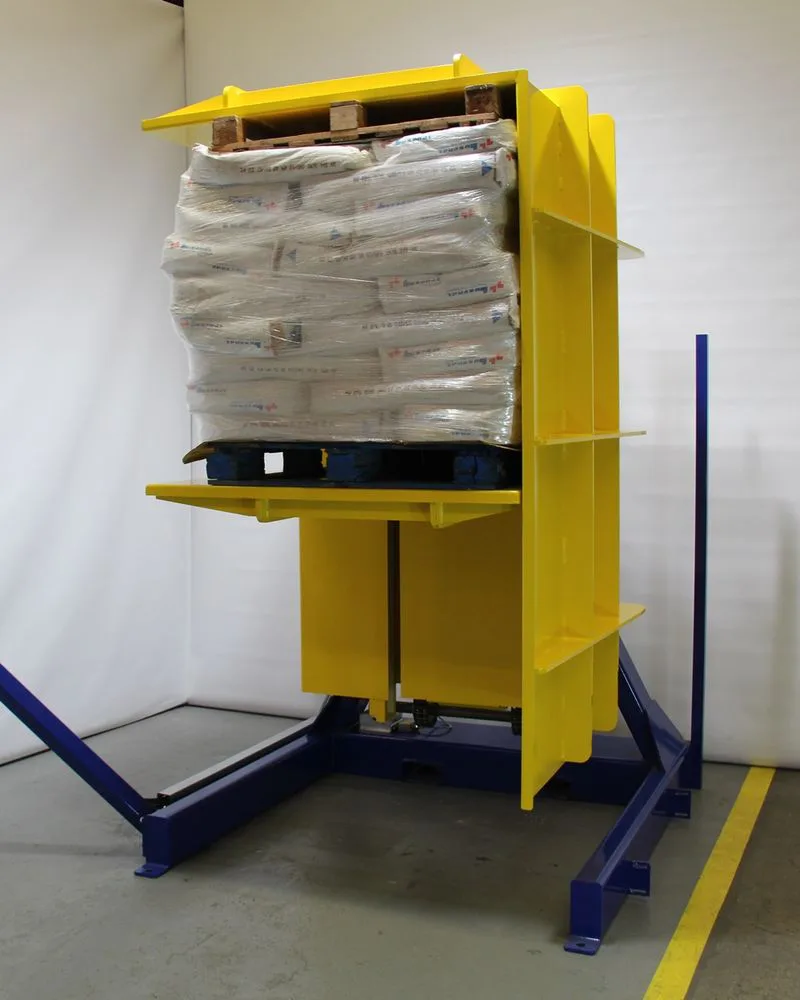
This integration is the key to unlocking the full potential of automation. It’s what separates a simple machine from a true strategic asset. Let's look at how this connection is made and what it enables.
The Language of Automation: PLCs and Protocols
At the heart of every automated pallet inverter is a PLC. Think of it as a rugged, specialized computer designed to run a factory. This PLC is the bridge between the physical machine and your digital network. To make this connection work, we use standard communication protocols.
- Ethernet/IP & PROFINET: These are the two most common protocols in modern factories. They use standard Ethernet cables, just like your office computers, but they carry specialized industrial data. This allows for high-speed, reliable communication between our pallet inverter, your conveyors, and your central WMS or MES (Manufacturing Execution System).
- Data Exchange: The communication is a two-way street. Your WMS sends a simple command, and the inverter's PLC handles all the complex steps: activating the conveyor, engaging the clamps, rotating the load, and releasing it. Once the job is done, the PLC sends a simple "complete" signal back to the WMS, along with useful data like the cycle time or load weight.
I worked with a client who was implementing a new MES platform to achieve total production visibility, a goal I know Javier shares. They were concerned that our pallet inverter would be a "black box" in their data map. I sat down with their engineers and showed them how our inverter's PLC could provide over 50 unique data points for every single cycle—things like clamping pressure, rotation time, motor current, and fault codes. This data wasn't just for our machine; it became an invaluable input for their MES, helping them with predictive maintenance and overall equipment effectiveness (OEE) calculations.
A Fully Synchronized Workflow
Let’s visualize how an integrated system works in practice.
- WMS Initiates Task: A palletized load of steel wire arrives at the end of the production line on a wooden factory pallet. The WMS scans its barcode and knows it needs to be transferred to a plastic export pallet. The WMS sends a "Swap Pallet" command to the pallet inverter's PLC.
- In-feed and Confirmation: The inverter's PLC activates the in-feed conveyor, which brings the load into the machine. Sensors confirm the pallet is in the correct position. The inverter sends a "Load Received" status back to the WMS.
- Automated Cycle: The inverter's PLC executes the swapping sequence: side walls close, top clamp secures the load, the entire load is inverted 180 degrees, and the old pallet is released.
- New Pallet and Completion: An automated dispenser places the new plastic pallet. The load is rotated back, and the new pallet is now at the bottom. The inverter's PLC sends a "Cycle Complete" signal to the WMS.
- Out-feed and Next Step: The WMS receives the signal and directs an AGV to pick up the newly palletized load and transport it to the stretch wrapper or the shipping dock.
This entire process happens without a single human touching the product or entering data. It is the definition of a smart factory. This is how you achieve full production visualization and build a resilient, data-driven operation.
What is the ROI of an automated pallet swapping solution?
As a business owner or CEO, every decision comes down to the numbers. A new piece of equipment is a significant capital investment. You need to be confident that it will not only solve an operational problem but also provide a clear and measurable return. You face pressure from market volatility and rising costs, so you cannot afford to invest in "nice-to-have" technology. You need solutions that directly strengthen your bottom line. An automated pallet swapping solution is not a cost center. It is a powerful engine for cost reduction and profit generation, and its ROI is often much faster than you might think.
The Return on Investment (ROI) of an automated pallet swapping solution is calculated by adding up all the annual cost savings and dividing that sum by the initial investment cost. The most significant savings come from three key areas: direct labor reduction, elimination of product and pallet damage, and the financial value of increased throughput. Additional savings from improved safety and reduced worker compensation costs also contribute. For most industrial applications, the full payback period for this investment is typically between 12 and 24 months.
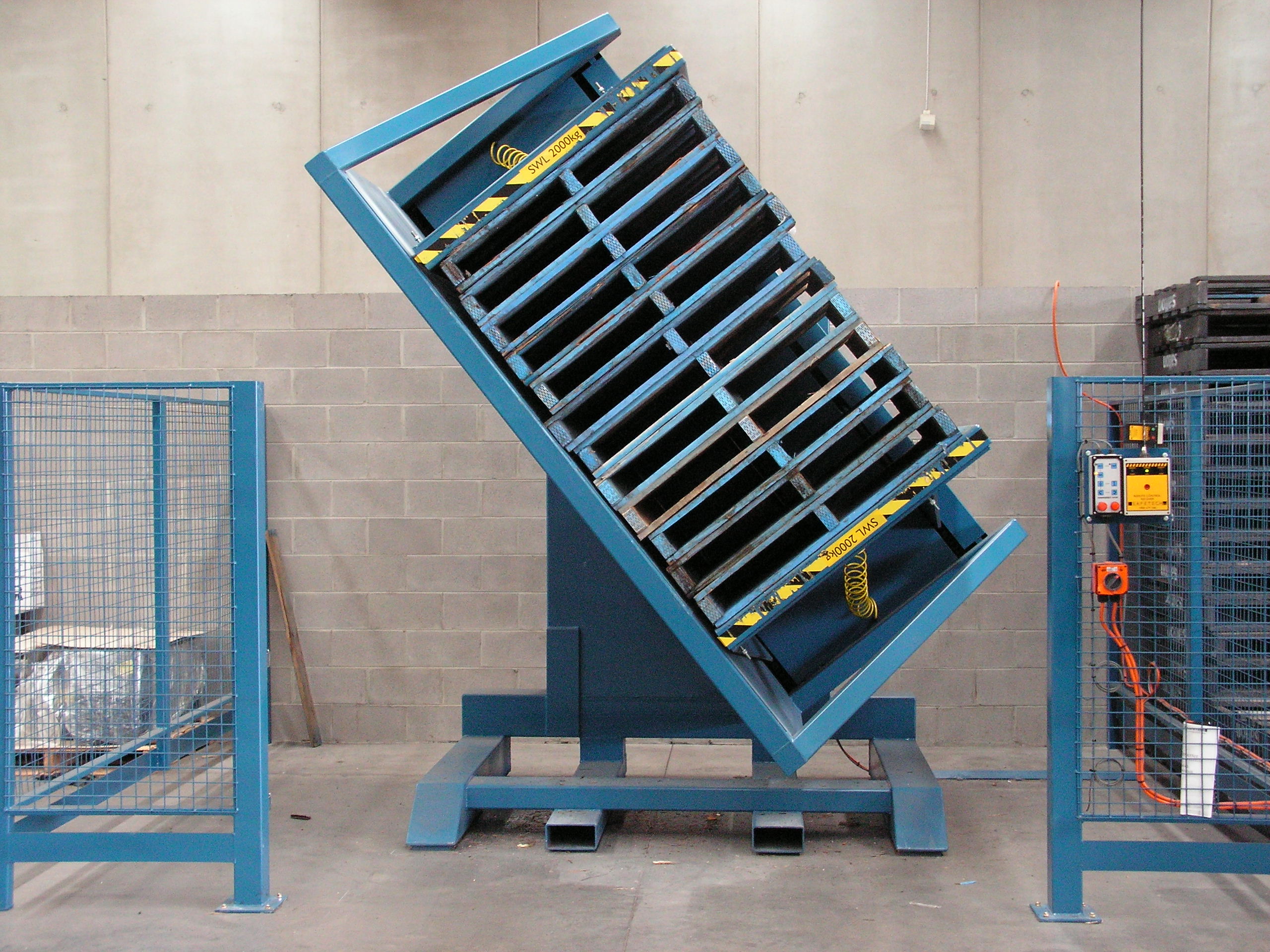
I always advise clients like Javier to look beyond the initial purchase price. The real value is in the total cost of ownership and the new efficiencies it creates. We should work together to build a detailed ROI model based on your specific operational data. It’s not about me selling a machine; it's about us proving a business case. Let's break down the key areas where you will see a financial return.
Quantifying the Savings
We can group the financial benefits into several concrete categories. Each one directly addresses a cost you are likely paying today.
1. Direct Labor Savings
This is the most straightforward calculation. If you have workers dedicated to manually swapping pallets, their wages, benefits, and overhead costs are a direct expense.
- Example Calculation: Assume 2 workers per shift are involved in pallet swapping, across 2 shifts per day.
- Labor Rate (wages + benefits): $30/hour
- Daily Cost: 2 workers/shift 2 shifts 8 hours/shift * $30/hour = $960 per day
- *Annual Savings: $960/day 350 working days = $336,000**
2. Reduced Product and Pallet Damage
Manual handling with forklifts is rough on products and pallets. Even a small amount of damage adds up.
- Example Calculation: Your facility ships $20,000,000 worth of product annually.
- Current damage rate from manual handling: 0.5%
- Annual Cost of Damage: $20,000,000 * 0.005 = $100,000
- An automated inverter handles loads gently and can reduce this damage by 80%.
- *Annual Savings: $100,000 0.80 = $80,000**
3. Value of Increased Throughput
This is a measure of opportunity cost. By speeding up the pallet swapping process, you can ship more products with the same fixed assets.
- Example Calculation: The automated system allows you to process 20 more pallets per day.
- Average value per pallet: $1,500
- Additional Daily Revenue: 20 pallets * $1,500/pallet = $30,000
- Profit Margin: 10%
- Additional Daily Profit: $30,000 * 0.10 = $3,000
- *Annual Additional Profit: $3,000/day 350 days = $1,050,000*
(Note: This value can be immense but depends heavily on being able to sell the extra capacity.)*
Here is a summary table for a hypothetical ROI calculation:
| Savings Category | Conservative Annual Savings |
|---|---|
| Direct Labor Savings | $336,000 |
| Reduced Product Damage | $80,000 |
| Reduced Pallet Damage/Loss | $15,000 |
| Reduced Worker Injury Costs | $20,000 |
| Total Annual Savings | $451,000 |
| Initial Investment (Example) | $350,000 |
| Payback Period | *($350,000 / $451,000) 12 months = 9.3 months** |
This kind of analysis transforms the conversation from a capital expense to a high-return investment. It directly supports Javier's goals of lowering operating costs by over 8% and boosting overall profitability.
My Personal Take: From Engineer to Partner
When I started as a young engineer on the factory floor, I saw these challenges firsthand. I saw the strain on workers lifting heavy loads, the frustration of managers dealing with production bottlenecks, and the financial impact of damaged goods. My journey, from an employee in a factory to owning my own successful packing machine company, was built on solving these very problems.
Javier, your journey from a team leader to the owner of a major steel mill resonates deeply with me. You didn't just buy a factory; you built it, piece by piece. You understand that every machine, every process, and every person is part of a larger, interconnected system. You know the pressure of meeting payroll and the profound satisfaction of seeing a perfectly tuned production line running at peak efficiency.
This is why I believe that what you are looking for is not just another supplier. You need a strategic partner. You need someone who has been in your shoes, who understands the language of both the shop floor and the boardroom. You need a partner who sees a pallet inverter not as a standalone product, but as a strategic tool to solve your biggest challenges.
Your concerns about aging equipment, volatile energy costs, and market fluctuations are real. An automated pallet inverter is a direct response to these pressures. It is a step toward predictive maintenance because its integrated sensors provide a constant stream of health data. It is a way to reduce waste and energy consumption, because gentle, automated handling means less damaged product that needs to be reworked or scrapped. And it is a tool to make your entire operation more resilient against labor shortages and market swings, because it provides a level of automation and predictability that manual processes can never match.
My mission with SHJLPACK is to give back. The packaging industry has given me everything, and now I want to share the knowledge I gained on my own path. My goal is to help leaders like you build stronger, more profitable, and more sustainable businesses for the future.
Conclusion
Automating pallet swapping with an inverter is a key step forward. It directly boosts efficiency, guarantees a safer workspace, and delivers a strong, measurable return on your investment.
